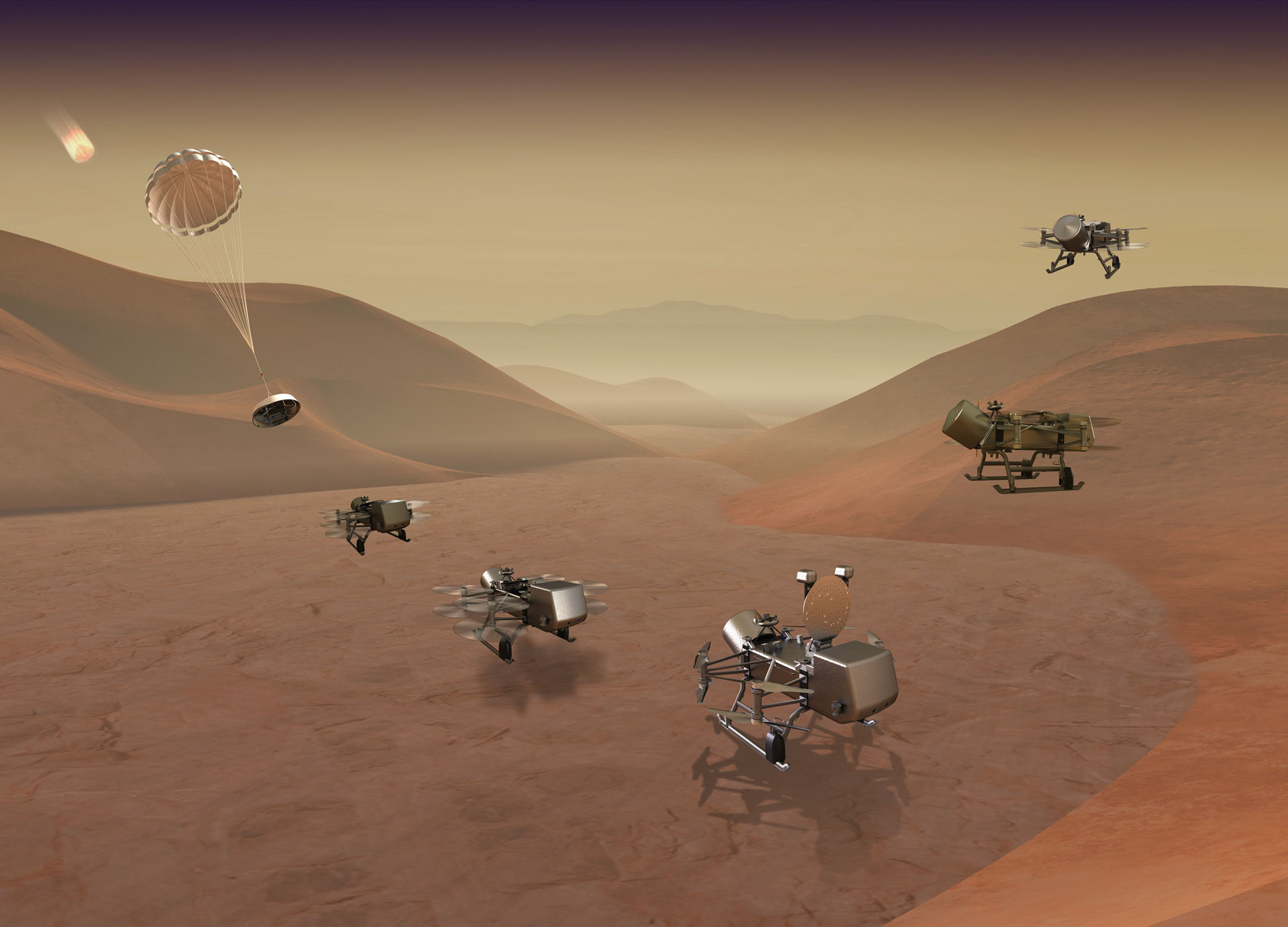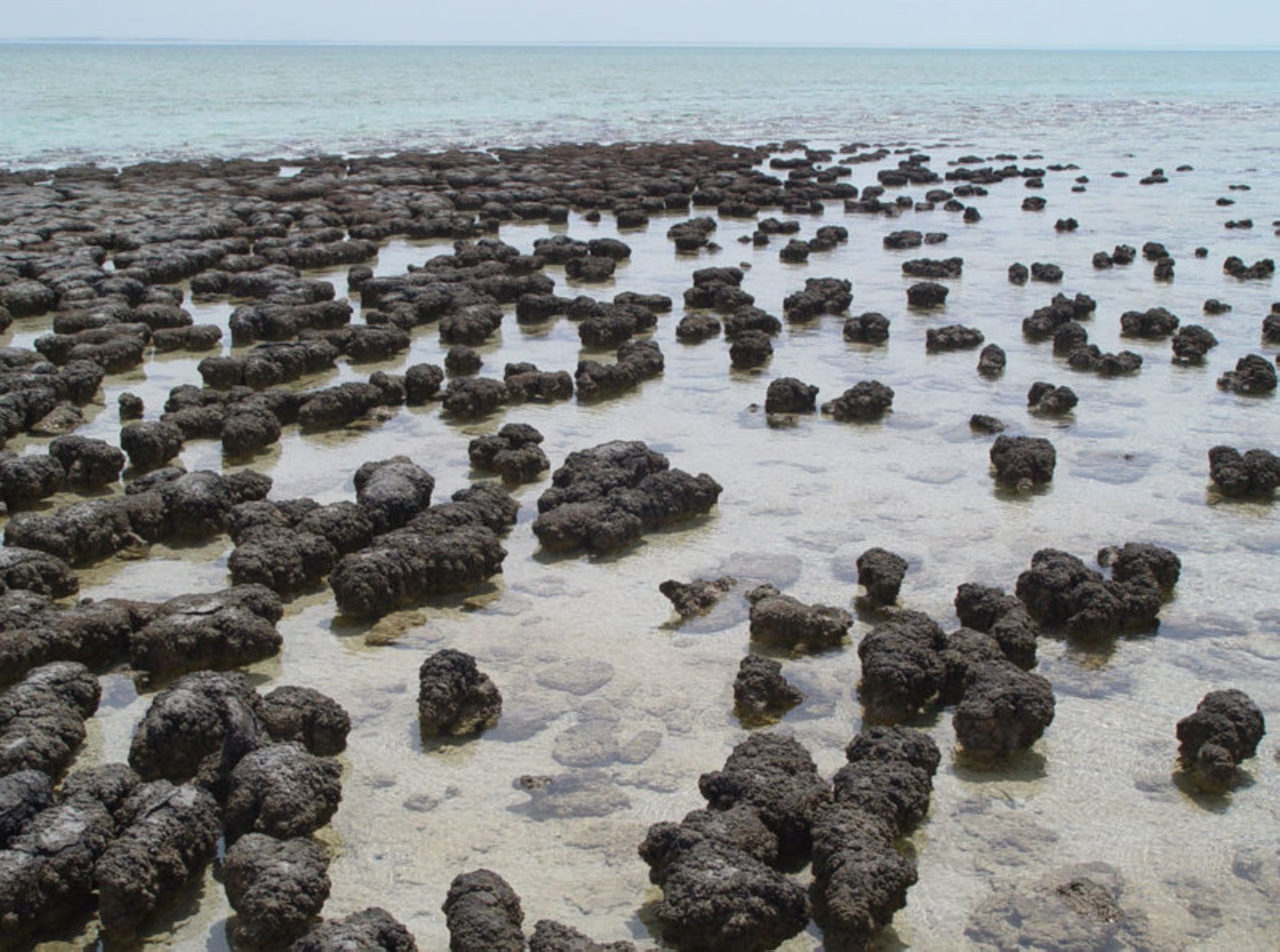Update Mars Part 2/4 - What is the next milestone in the search for extraterrestrial life?
We look to the near future and bring Dragonfly to the attention.
Dragonfly, it’s something completely different.
Nice to give is Dragonfly. The Dragonfly is an autonomously flying nuclear quadcopter drone that will conduct research on Titan. Due to the low gravity and the dense atmosphere on Titan, a drone can stay in the air there with relatively little energy consumption and small rotors. By using a nuclear energy source, the Dragonfly can be kept in operation for a long time. Solar energy is too weak to use. An additional advantage of the chosen reactor is that it produces a lot of residual heat that keeps the vehicle at the right temperature. The Dragonfly is scheduled to land on Titan in 2034. That would mean that the launch should take place in 2027. Something to follow up on.

The Dragonfly robot/drone. Impression from NASA.
Why Titan?
Saturn’s largest moon has a high priority for planetary exploration. Titan is an ocean world and the only moon in our solar system with a dense atmosphere. That ocean world does not consist of water but of methane. There is an Earth-like hydrological cycle of methane clouds, methane rain and methane liquid. Methane flows across the surface to fill lakes and seas. Abundant organic matter is present to study the types of chemical interactions that took place before life developed on Earth.
An introduction to Titan.
The two Voyager spacecraft observed Titan in 1979 and 1980, but the haze in the atmosphere obscured the surface.
The Hubble Space Telescope imaged Titan in 1994, revealing large bright and dark areas on the surface. However, the details of the surface landforms remained a mystery until July 2004, when Cassini arrived. During more than 100 nearby flights, the Cassini orbiter mapped much of Titan’s surface and made detailed studies of its atmosphere. Cassini also delivered the Huygens probe that safely descended to titan’s surface in 2005. Hanging from a parachute:
- Winds were measured.
- The atmosphere was mapped.
- And a small part of the surface was imaged in detail. Cassini showed us that titan’s surface has vast sand dunes in addition to rivers, lakes and even seas of liquid methane.
Titan’s atmosphere is four times denser than Earth’s and gravity is about 1/7 earth’s:
- This combination means that Titan’s methane droplets fall much slower than Earth’s. Methane trap on Titan is rare, so there could be centuries between showers at a particular location.
- But a plus is that due to the low gravity and the dense atmosphere, a drone can stay in the air with relatively little energy consumption and small rotors.
Titan’s atmosphere consists mainly of nitrogen (about 95%), with some methane (about 5%) and small amounts of other carbon-rich compounds. When exposed to sunlight, the methane molecules and nitrogen molecules are split by ultraviolet light and recombined into a variety of complex organic compounds. Organic molecules are the building blocks for life, and their presence on Titan challenges scientists. As an ocean world, Titan offers a rare opportunity to investigate the origins of prebiotic chemistry outside earth’s environment and thus the origin of life. When our earth had cooled sufficiently, it underwent major chemical changes. This is the definition of prebiotic. Chemicals that are indispensable for life would have arisen then:
- Due to the operation of high temperatures.
- By ultraviolet light.
- Due to the electrical discharges in the atmosphere.






Comments